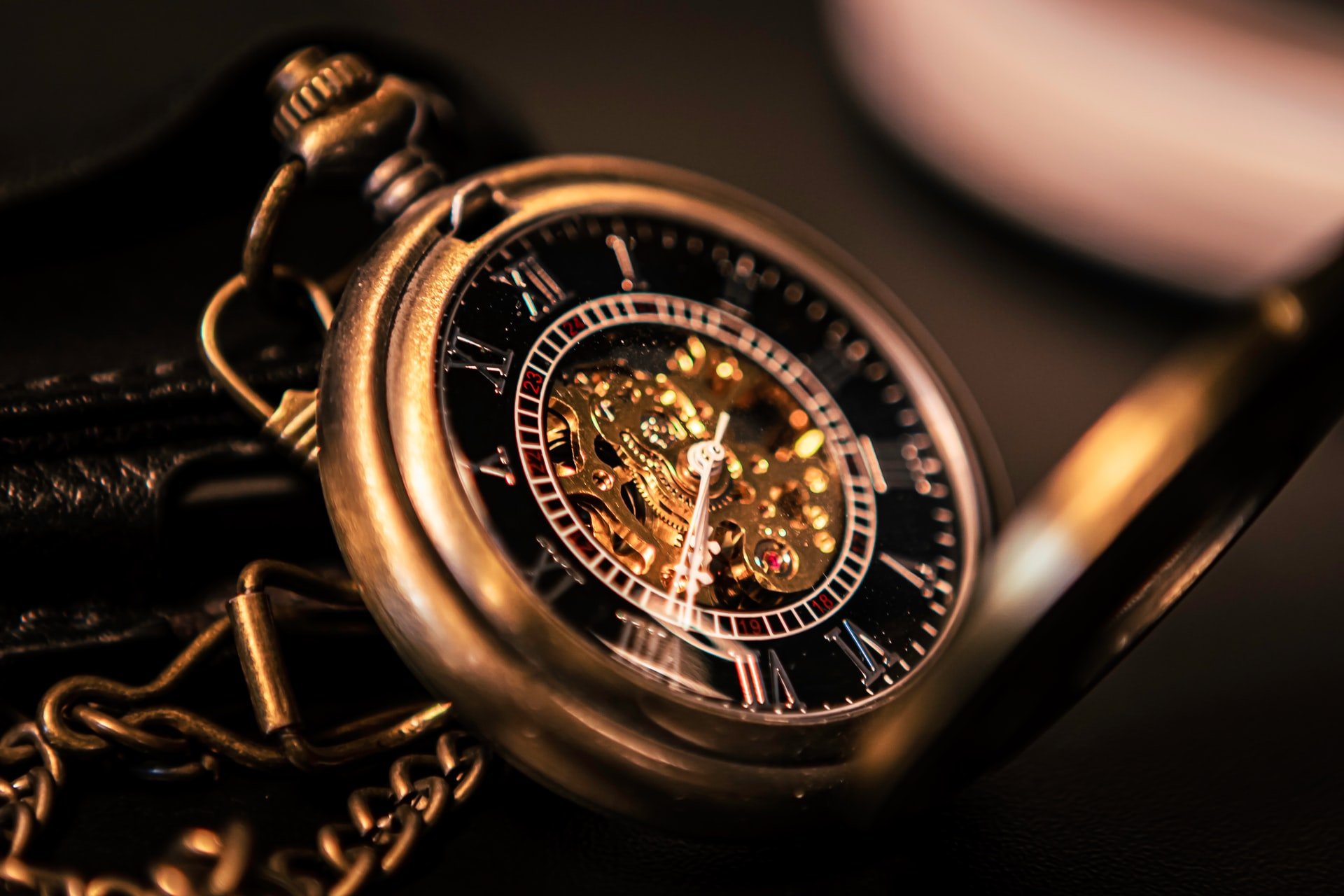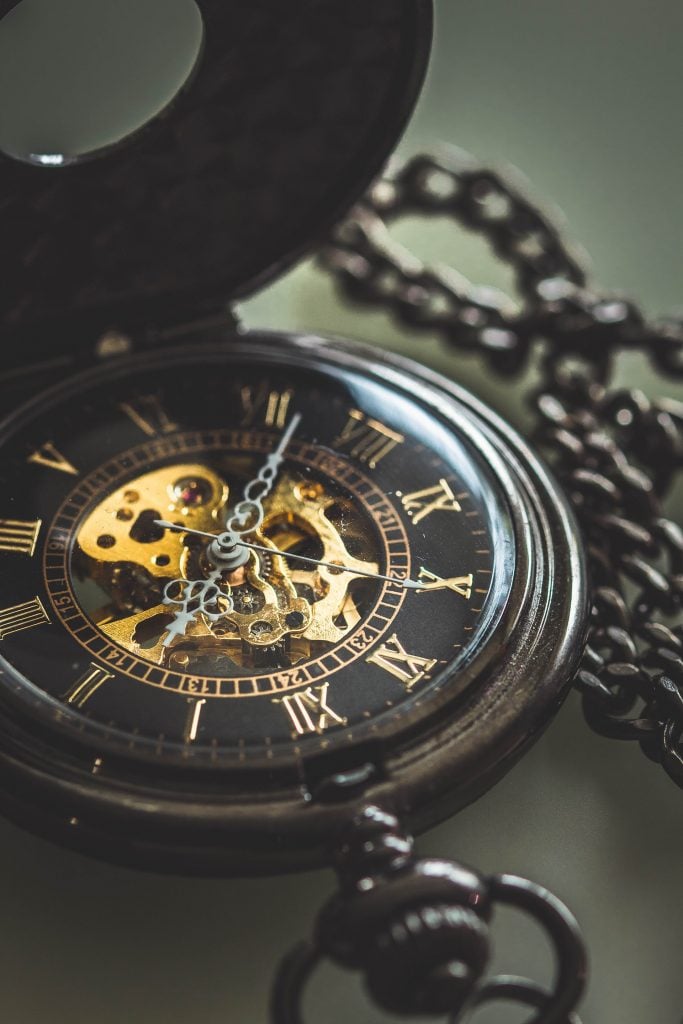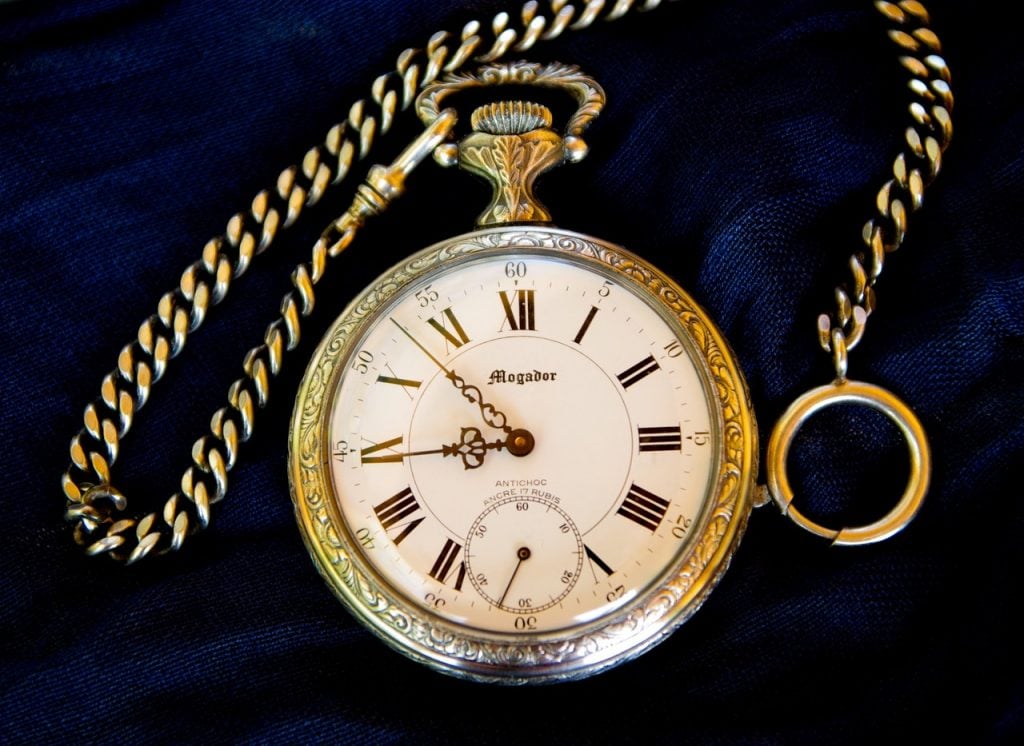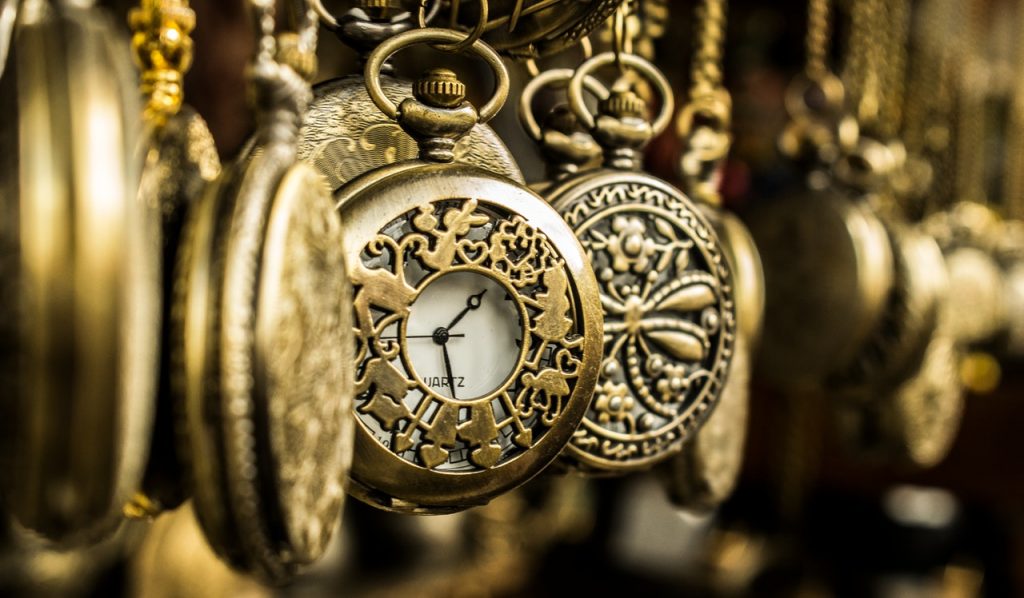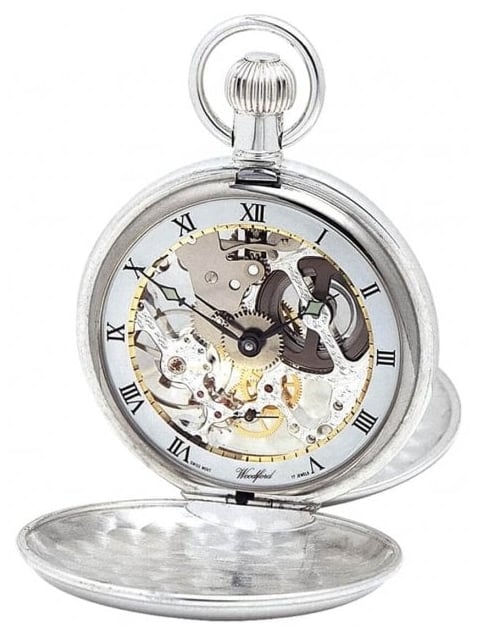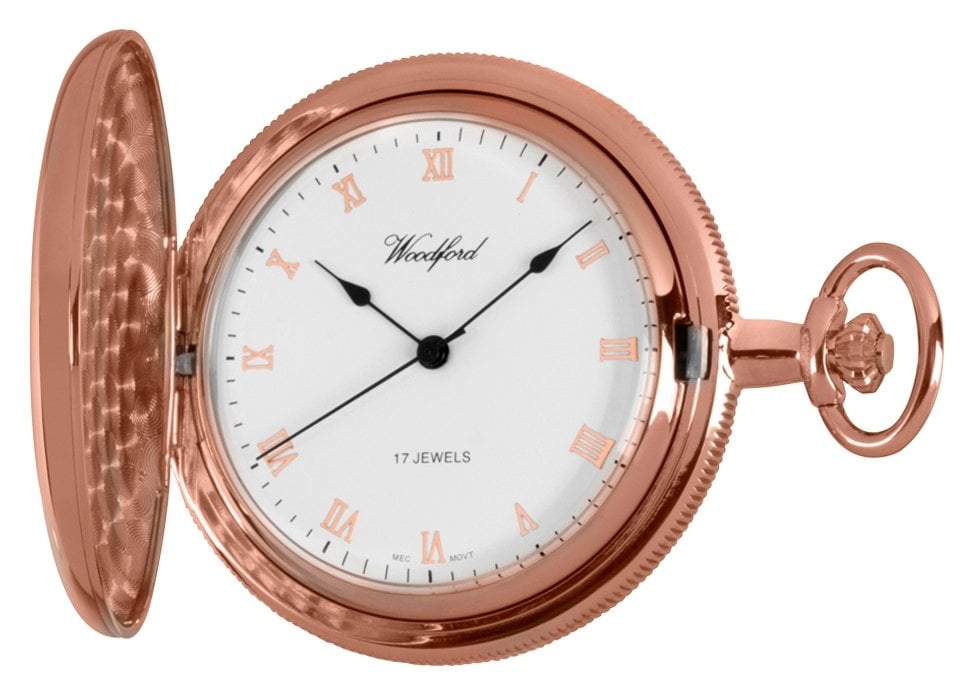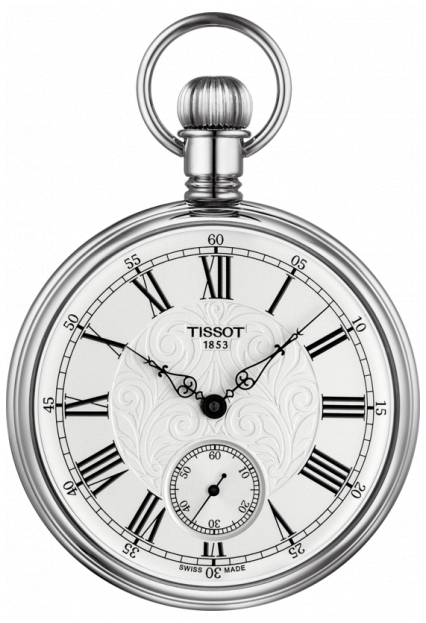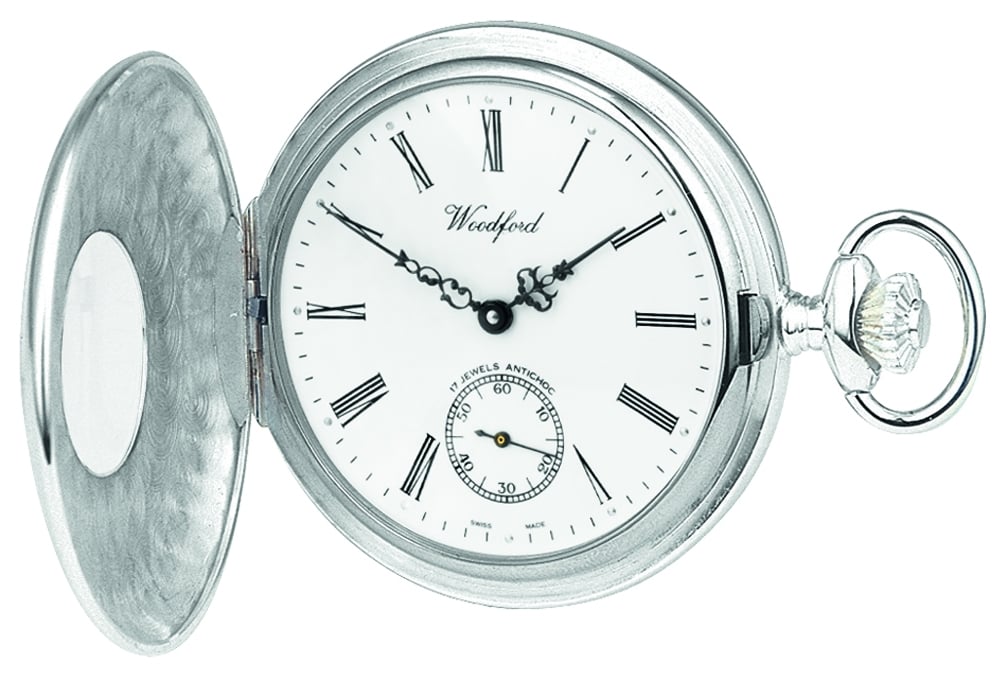Pocket watches have been an integral element of horological fashion since the 16th century. They are the inspiration behind the wristwatch that we know and love today. This beginners guide to pocket watches aims to provide information to help a new collector enter the world of pocket watches and decide if their collection would benefit from the addition of one. Watchmakers managed to miniaturise clock movements during the 16th century. These new, smaller movements were built into cases and attached to a chain which could then be placed in the pocket. The pocket watch was at the height of horological fashion for decades. They were a way to show class and wealth, as well made pocket watches had a rather high price tag.
After the invention of wristwatches, there was a decrease in demand for the classic pocket watch. However, over time desire for these traditional timepieces has increased and many modern watchmakers still build pocket watches. Many collectors enjoy having a pocket watch in their collection. They are a symbol of tradition, but they are still frequently worn by many. Pocket watches make an excellent addition to a suit or smart outfit, providing a touch of timeless elegance. If you are interested in these classic timepieces, keep reading for our beginners guide to pocket watches.
A Brief History of the Pocket Watch
The pocket watch was only made possible after Peter Henlein invented the mainspring. Before this, clocks were powered using falling weights which could not adapted into a smaller size. Henlein’s invention revolutionised the horological industry, making timepieces portable and pocket sized. The very first pocket watch models were worn on a chain around the neck. These watches only had one hand as the movements were not yet complicated enough to operate multiple hands. It was around 1675 that pocket watches were first commonly worn in the pocket. This trend grew out of Charles II wearing a waistcoat and placing his pocket watch in the pocket. The royals were the height of fashion in these times. People in high society modelled their own looks off of those of the royal family.
Pocket watches were considered to be luxury items until the late 1700s. A very high level of expertise and craftsmanship was required to make each one. As technology progressed, standardised parts could be made. This allowed the prices of pocket watches to be reduced, making them more affordable and accessible to the wider population. These timepieces dwindled in popularity during wartime as many required the convenience of a wristwatch. In modern times, pocket watches have faded in and out of mainstream fashions. However, they are always a statement of elegance.
Types of Pocket Watch
There are various different kinds of pocket watches, and each type will appeal to a different kind of wearer. Some pocket watches focus more on utility, whereas others prefer to truly exhibit their beauty. The original pocket watches were in egg-shaped cases. This was because they did not yet feature glass or crystal to protect the dial. This meant that the case shape had to be designed to protect the delicate hands and movement within. Over the years, technologies and designs have advanced that allow incredibly precise modern movements and elaborate designs to be featured in pocket watches. These advancements make them appealing to the contemporary collector. It is important to know the types of pocket watches before selecting the best one for you, so we have included a brief description of each in our beginners guide to pocket watches.
Open Face Pocket Watches
This type of pocket watch is one of the oldest and most traditional pocket watch designs. They are very simple as they do not have a cover over the dial. This design choice was made to allow railroaders to check their pocket watches easily and quickly, without needing to open the case.
Full Hunter Pocket Watches
The Full Hunter pocket watch features a hinged cover that will protect the dial. This feature makes the pocket watch more durable, as it is less likely to get scratched when placed in one’s pocket. The cover also allows watchmakers another surface to decorate with elaborate and eye-catching designs.
Half Hunter Pocket Watches
Half Hunter pocket watches incorporate elements from both the Full Hunter and the Open Face designs. They have a hinged cover like the Full Hunter. However, this cover features a transparent window through which the time can be read. This type of pocket watch allows quick reading of the dial alongside additional durability.
Double Hunter Pocket Watches
Double Hunter pocket watches tend to be focused mainly on the aesthetics. Traditionally, they are a larger style of pocket watch to maximise their beauty. These watches have a hinged cover on both sides and are often made with a skeleton dial. This allows the movement to be viewed from all angles through both the dial and a transparent case back.
Why Buy a Pocket Watch?
In a time where many are questioning whether they require a watch at all, it seems peculiar to ponder the purchase of a pocket watch. Many are now reaching for their phones or smartwatches to read the time and forgoing traditional timepieces. However, to a true collector or avid watch wearer, a traditional timepiece will always be an essential aspect of daily accessorising. In modern fashion, pocket watches are an item that is best paired with a suit for a formal occasion. Many believe that they look best when in the way that they were initially worn at the time of their invention. These elegant timepieces pair beautifully with a waistcoat and blazer for a timeless and traditional look. A pocket watch will make an excellent conversation starter. These traditional timepieces fascinate many people with their beauty and wealth of history.
The pocket watch has truly withstood the tests of time. They have remained a constant presence in the watch industry through changing fashions and the 1970s quartz crisis. These timepieces are a symbol of the history of the watch industry and will continue to fascinate collectors for decades to come. A pocket watch would make an excellent addition to any watch collection. They are perfect for formal occasions and an eye-catching and fun addition to modern styling.
Pocket Watch Recommendations
We have curated a selection of pocket watches to feature in our beginners guide to pocket watches. They are each slightly different, using different designs and metals to ensure there is a perfect model for each collector. Pocket watches come in a great variety of shaped and sizes, so it is recommended that each collector assesses which would best suit their own lifestyle.
Woodford | Hunter Skeleton | Double Lid | Silver | Pocket Watch | 1003
This pocket watch has a full hunter design, giving it plenty of durability. The stainless steel cover will protect the dial and give the wearer the true experience of wearing a traditional pocket watch when they have to open the cover to read the time. This watch features covers on both the front and back. Paired with the skeleton dial, this allows the Swiss made hand-wound mechanical movement to be viewed and enjoyed from all angles. The dial features simple, black Roman numeral indices with black hour and minute hands which do not distract from the skeleton dial design. The crown is placed at 12 o’clock on the stainless steel case, providing a traditional pocket watch look.
Rotary Men’s Mechanical Pocket Watch MP00713/01
This double hunter pocket watch is made using a gold PVD plated stainless steel case and Albert chain. This makes it a great choice for those who prefer to accessorise using gold jewellery, rather than silver. The white dial features a skeleton cut-out at the centre to allow the movement to be observed from both the front and back of the watch. This is made possible as the case has two hinged covers which both open to reveal the inner workings of this timepiece. Gold indices and black hands decorate the dial, making it easy to read. The case measures 47.5mm in diameter and 17.6mm in depth, so it is a pleasant size to hold in one’s palm and comfortable to keep in the pocket.
Woodford Full Hunter Rose Gold Pocket Watch 1091
Rose gold is a very on trend and contemporary metal. Paired with the traditional design of a pocket watch, it creates a very pleasant juxtaposition of old and new styles. This Woodford model features a case made from rose gold-plated stainless steel that is polished to a beautiful shine. The simple dial exhibits rose gold Roman indices and black hour, minute and second hands. This watch is powered by a Swiss made hand-wound mechanical movement, providing the wearer with the experience of using a traditional timepiece. The full hunter cover of this watch will protect it from any bumps and scratches.
Tissot Lepine Mechanical Pocket Watch Stainless Steel T8614059903300
Tissot have been building high quality watches since the time when pocket watches were the most popular choice of timepiece. This means that a collector can be assured that Tissot are well versed in creating these classic watches and the movement within will be of the finest quality. This Tissot model uses the traditional open face design, meaning that the dial can be read quickly and easily at a glance. The white dial is textured and features black Roman numerals with decorative black hour and minute hands. An additional sub dial is positioned at 6 o’clock. A palladium-plated brass case frames the dial and measures 51mm in diameter. This classic pocket watch is powered by a hand-wound mechanical movement that has a power reserve of up to 46 hours.
Woodford | Half Hunter | Sterling Silver | Pocket Watch | 1004
This pocket watch is a great option for those searching for a half hunter model. The half hunter design provides protection and durability for the dial, but still allows the time to be read without the need to open the case. The white dial has a very traditional design with elongated Roman numerals and elaborate hour and minute hands. A small seconds sub dial is positioned at 6 o’clock on the dial. The watch is powered by a hand-wound mechanical movement, allowing the wearer the joy of being able to wind such a classic timepiece. The crown is positioned at 3 o’clock on the case for ease of use.
What are your thoughts on our beginners guide to pocket watches? Do you think that you would add a pocket watch to your collection? Let us know in the comments below!

